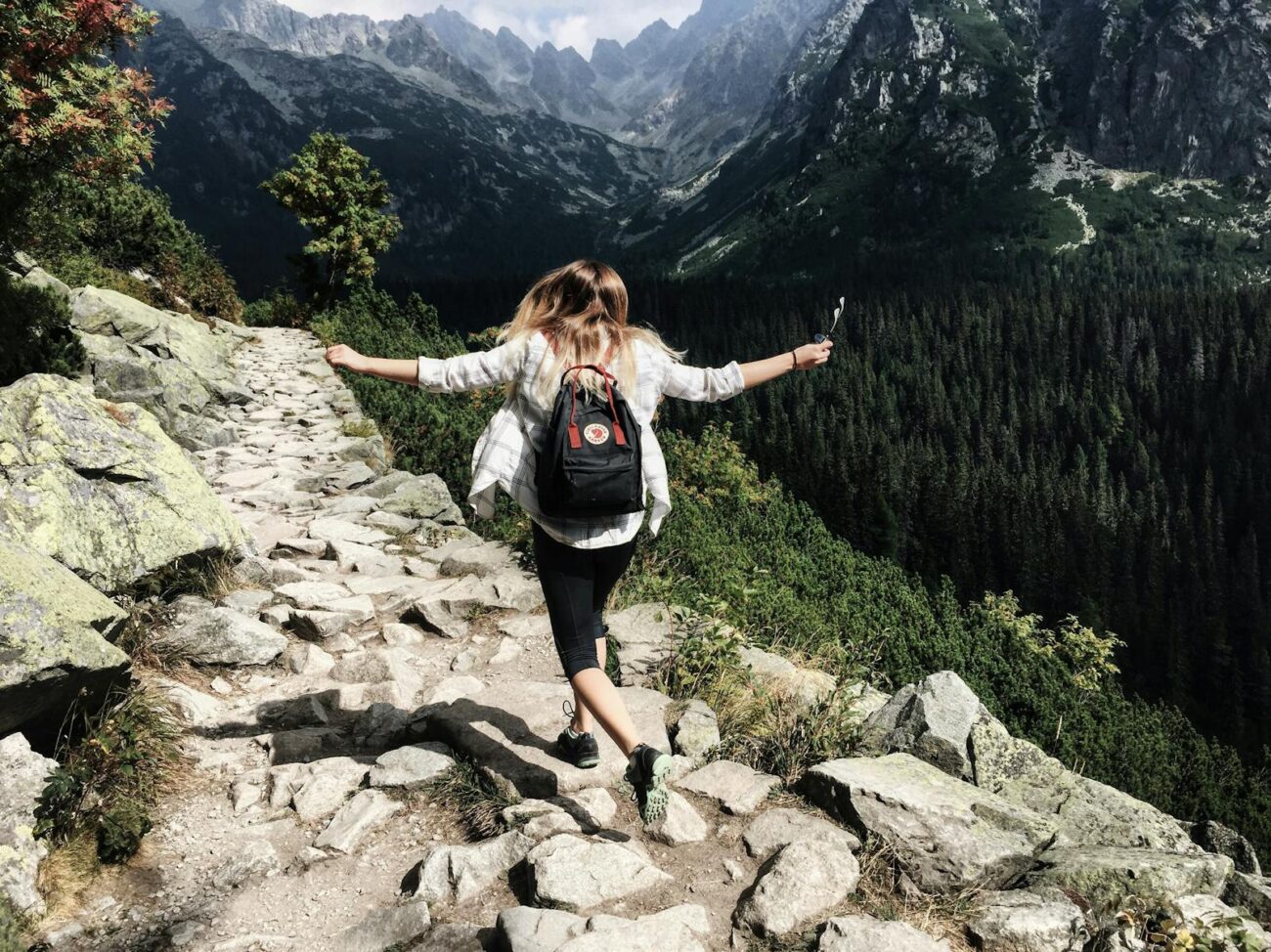The art of packing for a short adventure lies in the delicate balance between being prepared and traveling light. Whether you’re planning a weekend hiking trip, a three-day city exploration, or a quick beach getaway, packing efficiently can make the difference between an enjoyable experience and a burdensome ordeal. Overpacking not only weighs you down physically but can also complicate your journey with unnecessary stress and logistics. This guide will walk you through essential packing strategies for a three-day adventure, helping you bring exactly what you need without overloading your bags or yourself.
Understanding the One-Bag Philosophy
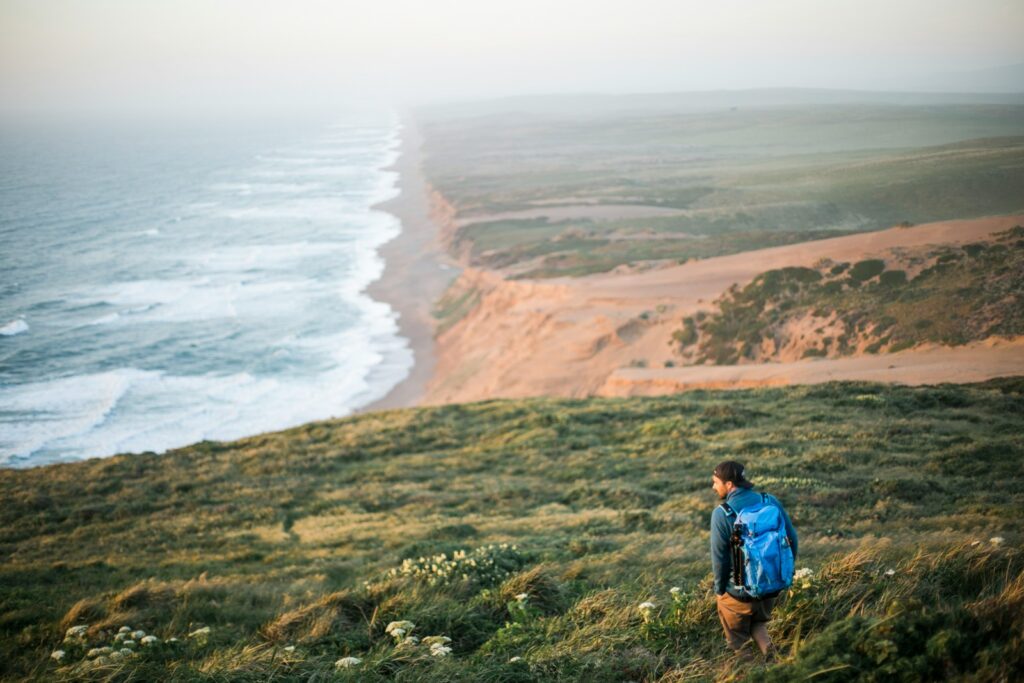
The one-bag approach to travel has gained popularity for good reason – it simplifies your journey from start to finish. By limiting yourself to a single, well-packed bag, you eliminate check-in waits at airports, reduce the risk of lost luggage, and gain mobility to navigate public transportation or walk distances with ease. This philosophy forces intentional packing decisions, requiring you to distinguish between items you truly need versus those you merely want to bring along. For a three-day adventure, a 30-40 liter backpack or weekender bag typically provides ample space while encouraging disciplined packing habits. The psychological freedom of traveling light often enhances the adventure itself, allowing you to focus on experiences rather than managing possessions.
Destination Research: The Foundation of Smart Packing
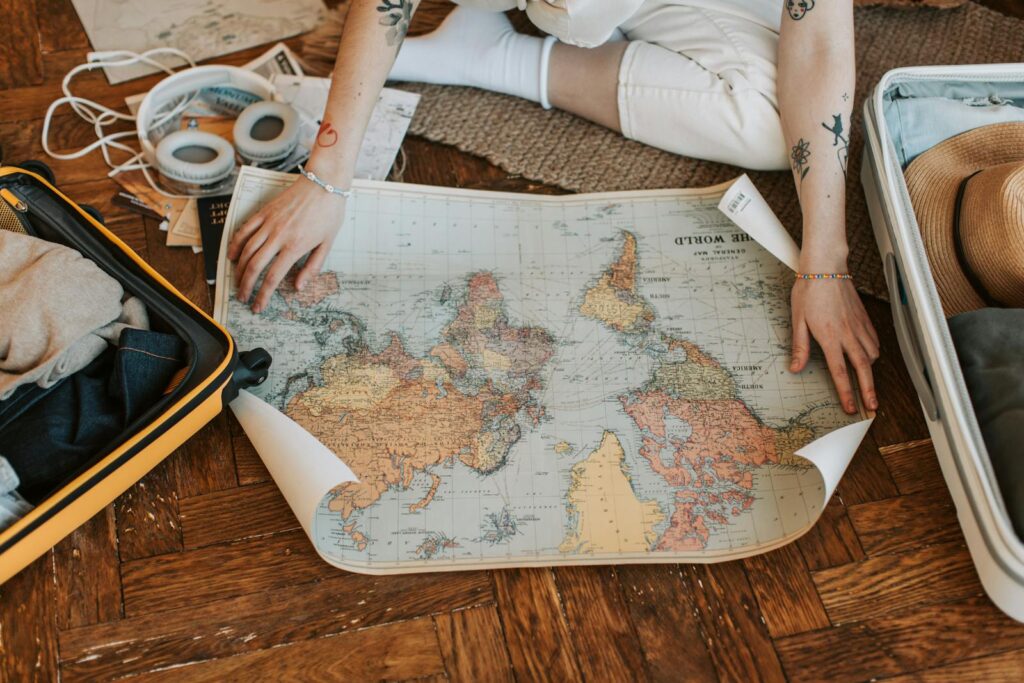
Before a single item goes into your bag, take time to thoroughly research your destination’s specific conditions. Check detailed weather forecasts for all three days, noting temperature ranges, precipitation chances, and any unusual weather patterns expected during your visit. Investigate the cultural norms and dress codes of your destination, particularly if you’re traveling internationally or to locations with conservative expectations. Research the activities you’ll be participating in, including any specialized gear requirements or rental options available on-site. Understanding access to laundry facilities or services can significantly reduce clothing needs, as can knowledge about local stores where you might purchase toiletries or other necessities upon arrival rather than packing them.
Creating a Customized Packing List
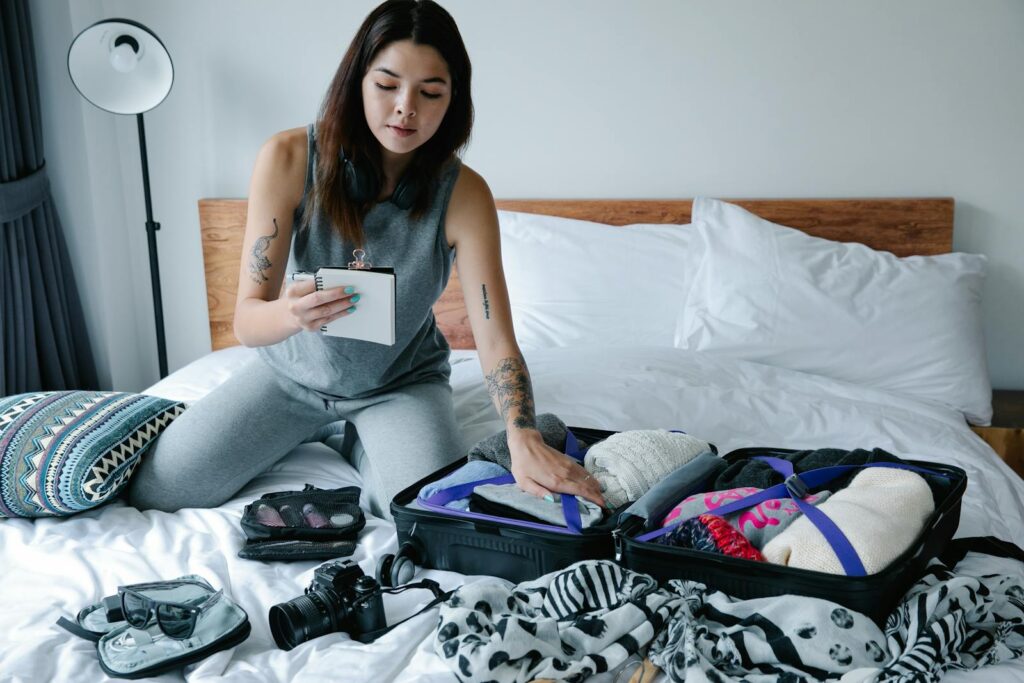
A thoughtful packing list serves as your blueprint for efficient preparation, preventing both forgotten essentials and impulsive overpacking. Begin by mapping out your entire itinerary, hour by hour if possible, noting each activity and its specific requirements. Next, list all potential items you might need, then methodically review each one with a critical eye toward necessity. Categorize items as “absolute essentials,” “situational needs,” and “comfortable extras” to help prioritize when space becomes limited. Digital packing list apps like PackPoint or Packing Pro can generate customized suggestions based on your destination, activities, and weather forecasts. After each trip, update your master packing list with notes about what you used, what you didn’t, and what you wished you had brought to continuously refine your packing strategy.
Versatile Clothing Strategies

The cornerstone of lightweight packing is a versatile, mix-and-match wardrobe that maximizes combinations while minimizing volume. Select a consistent color palette of 2-3 complementary colors to ensure all items work together, creating multiple outfit possibilities from fewer pieces. Focus on layering rather than bringing bulky individual pieces—a lightweight base layer, mid-layer, and weather-appropriate shell offer adaptability across changing conditions. For a three-day trip, the “5-4-3-2-1” rule provides an excellent starting framework: five pairs of socks/underwear, four tops, three bottoms, two pairs of shoes, and one jacket. Choose fabrics that perform multiple functions: quick-drying materials that resist wrinkles, moisture-wicking properties for comfort during activities, and odor-resistant fabrics like merino wool that can be worn multiple times without washing.
Footwear Considerations
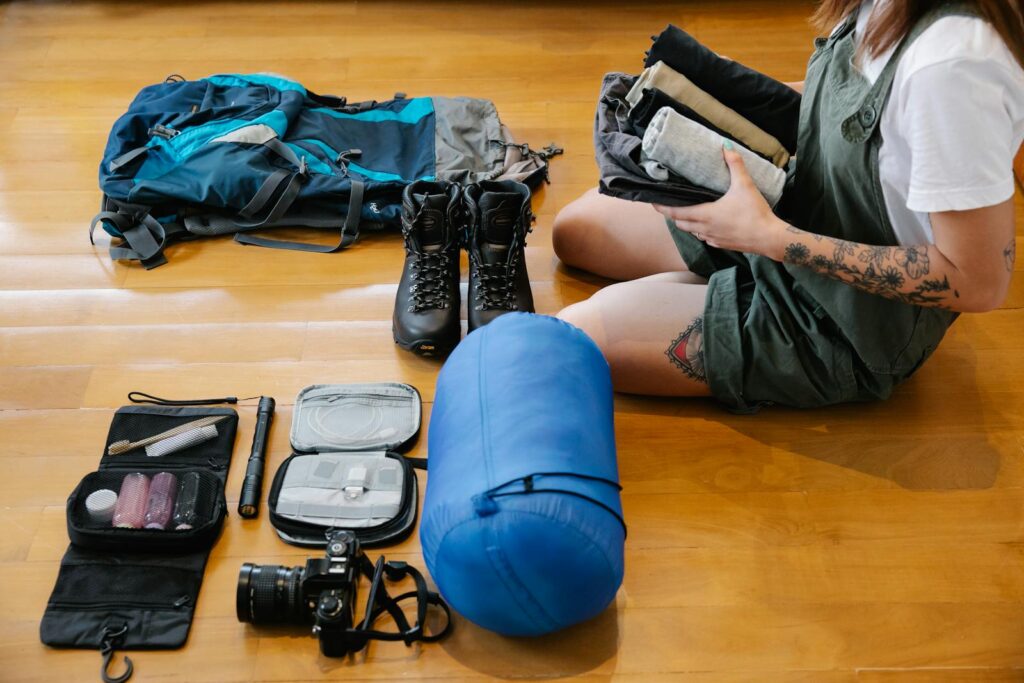
Shoes often constitute the heaviest and bulkiest items in your bag, making strategic footwear selection crucial for lightweight travel. For most three-day adventures, limit yourself to two pairs maximum: one versatile pair worn during transit and a second packed option for specific activities or occasions. Select a primary walking shoe comfortable enough for all-day wear but appropriate for multiple settings, such as stylish hiking shoes that work for both trail exploration and casual dining. If a second pair is necessary, choose the lightest option that meets your needs—lightweight trail runners instead of heavy hiking boots, or packable flats instead of bulky dress shoes. Consider shoe placement strategically when packing; use the interior space of packed shoes for socks, underwear, or other small items, and position shoes along the bag’s bottom or back panel for optimal weight distribution.
Minimalist Toiletry Kit

A streamlined toiletry approach prevents one of the most common packing pitfalls—an oversized kit filled with rarely-used products. Start by evaluating your daily routine and identifying truly essential items, distinguishing between needs and preferences. Transfer products into travel-sized containers, aiming for 3 ounces (85ml) or smaller to comply with airline regulations and minimize bulk. Multi-purpose products offer significant space savings: consider combination shampoo/conditioners, moisturizers with SPF protection, or soap bars that work for both body and face. Solid toiletries represent the frontier of lightweight travel, with options like shampoo bars, solid perfumes, and toothpaste tablets eliminating liquid weight and spill concerns entirely. For very short trips, consider whether hotel-provided basics might suffice, potentially eliminating several items from your kit.
Technology and Electronics Essentials
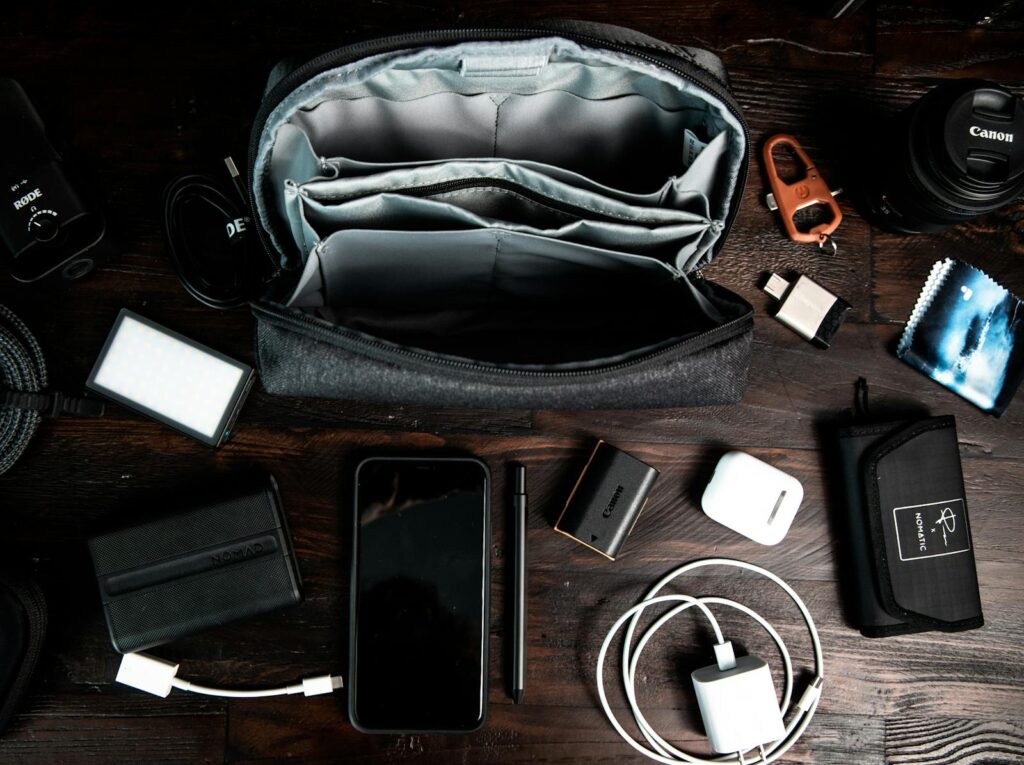
Modern adventures often require some technological support, but electronics can quickly become heavy power-drainers both literally and figuratively. Assess each device against its true necessity and potential redundancy—can your smartphone replace your camera, e-reader, and GPS device? For charging infrastructure, a single multi-port USB charger with detachable cables serves multiple devices while occupying minimal space. Battery management becomes crucial on shorter trips; a compact power bank rated between 10,000-20,000mAh typically provides sufficient emergency charging capacity without excessive weight. Consider connectivity needs realistically—will you truly need constant laptop access, or might occasional smartphone use suffice? For entertainment during downtime, digital solutions like e-books, downloaded movies, or podcasts provide hours of engagement without physical bulk.
First Aid and Emergency Preparedness
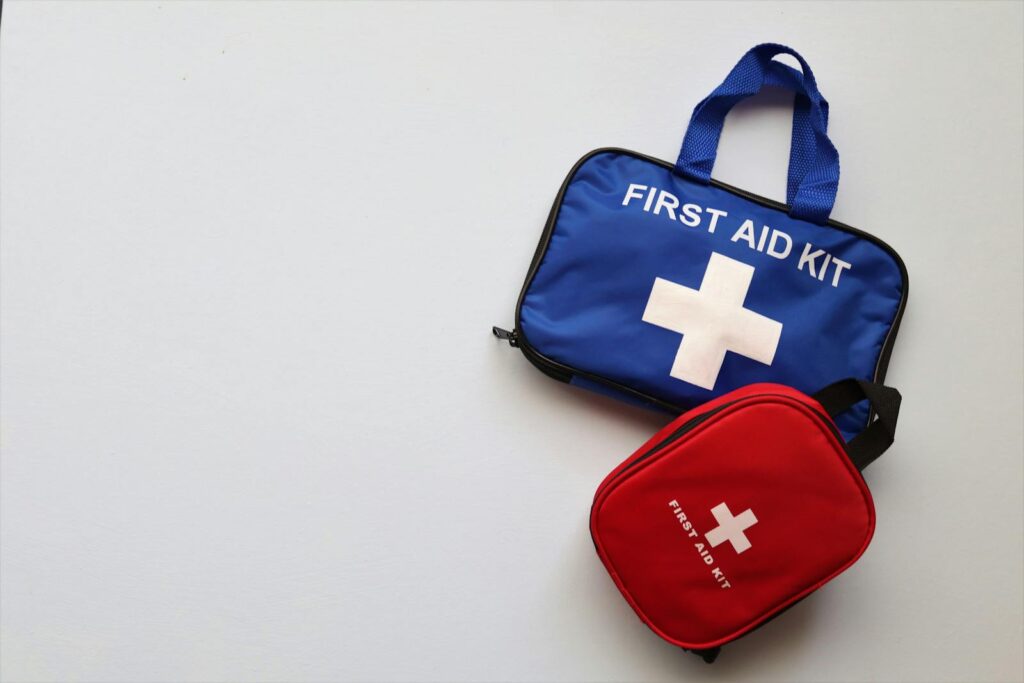
A compact yet comprehensive first aid kit represents one area where preparedness should never be sacrificed for space considerations. Start with a basic pre-assembled travel first aid kit, then customize it to your specific needs and destination risks. Essential components include adhesive bandages in various sizes, blister treatment, pain relievers, anti-diarrheal medication, antihistamines, and any personal prescription medications. Supplement with destination-specific items like altitude sickness medication for mountain trips or robust insect repellent for tropical locations. Emergency preparedness extends beyond medical concerns—include a small flashlight or headlamp with fresh batteries, a lightweight emergency blanket, and critical contact information stored in both digital and physical formats. For adventure travel in remote areas, consider a compact satellite messenger device that can summon help beyond cellular coverage.
Efficient Packing Techniques
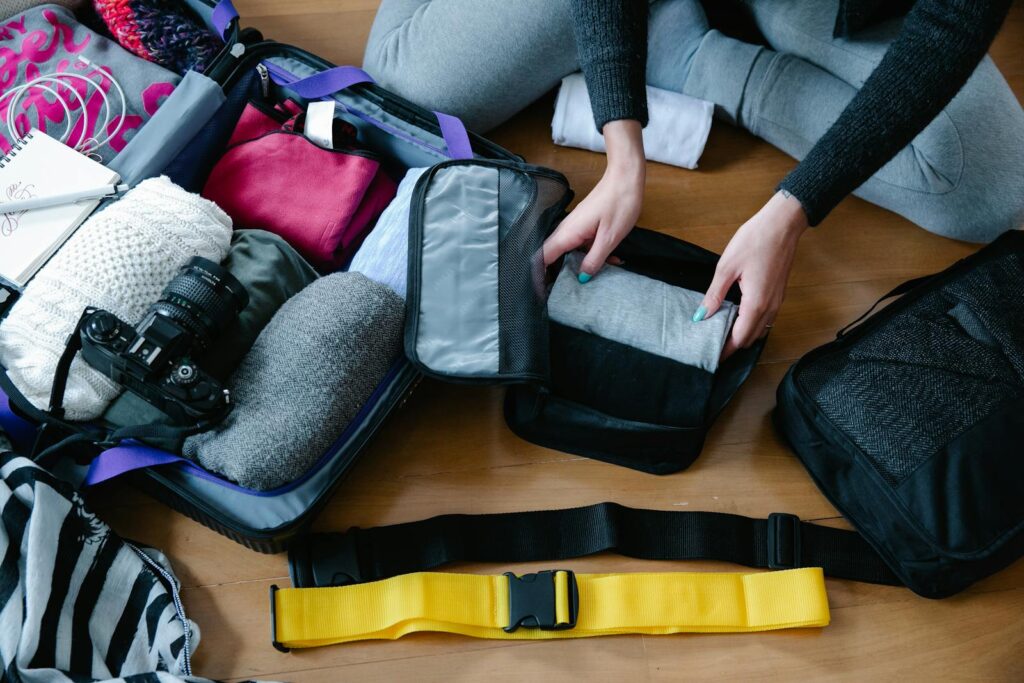
The physical method of placing items in your bag significantly impacts both capacity and organization. Rolling softer clothing items creates compact cylinders that maximize space efficiency and minimize wrinkles in many fabric types. For bulkier items like sweaters or jackets, compression packing cubes squeeze out excess air, potentially reducing volume by up to 30% while keeping categories neatly separated. The “bundle wrapping” technique—wrapping clothes around a central core—offers excellent wrinkle prevention for items that need to look presentable upon arrival. Strategic item placement optimizes bag balance and accessibility: position heavier items closest to your back for backpacks or at the wheel end for rolling luggage, while keeping frequently-needed items in easily accessible outer pockets. For maximally efficient use of every cubic inch, stuff socks and underwear inside shoes, hats, or other hollow spaces.
Food and Hydration Planning
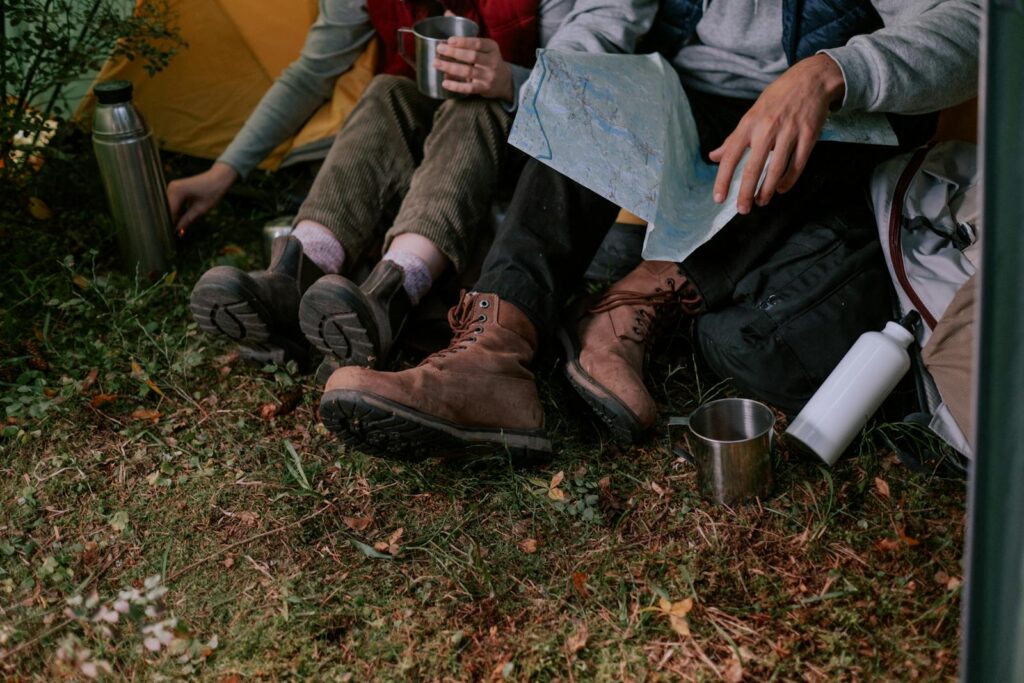
Proper hydration and nutrition maintain energy levels throughout your adventure, but food and water often add significant weight if not approached strategically. A single reusable water bottle with filtration capability eliminates the need for purchasing bottled water while ensuring safe hydration almost anywhere. For outdoor adventures, collapsible water containers provide additional capacity when needed without permanent bulk. Energy-dense, lightweight snacks like nuts, dried fruits, and energy bars offer substantial nutrition with minimal weight penalty during active days. Rather than packing all potential food needs, research your destination’s food availability and focus on carrying only specialized items you can’t easily acquire on location. For overnight outdoor adventures, freeze-dried meals provide complete nutrition with minimal weight and simple preparation requirements.
Weather Adaptability Solutions
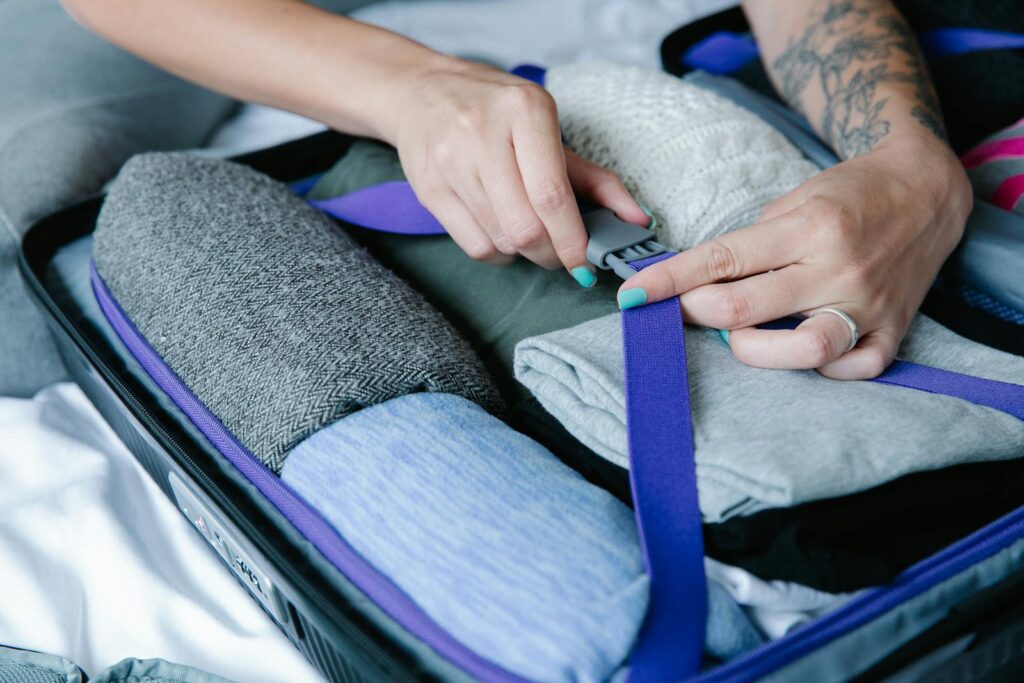
Unpredictable weather represents one of the greatest challenges to minimalist packing, particularly for outdoor adventures. Rather than packing for every possible weather scenario, focus on versatile layers that work together across a range of conditions. A lightweight, packable rain jacket with reliable waterproofing serves as your primary weather defense, ideally compressing to the size of a large apple when not needed. Ultralight insulation layers using modern synthetic or down materials provide exceptional warmth-to-weight ratios, often packing down to remarkably small volumes. For sun protection, a packable hat with adequate brim offers more comprehensive coverage than sunscreen alone, while serving double duty to protect from light precipitation. Accessories like a lightweight buff or neck gaiter provide remarkable versatility, functioning as a neck warmer, headband, face covering, or impromptu towel depending on conditions.
The “Just In Case” Trap

The psychological pitfall of packing “just in case” items often contributes more to overloaded bags than any other factor. Challenge each potential “just in case” item with realistic probability assessment—what are the actual chances you’ll need that specific item, and what would be the consequences of not having it? Consider the local availability of items at your destination; in most populated areas, anything truly needed can be purchased if an unexpected situation arises. Distinguish between comfort and necessity when evaluating contingency items—minor inconvenience rarely justifies carrying extra weight throughout your entire journey. For legitimate concerns, seek the lightest possible insurance policy: a tiny sewing kit rather than extra clothes, a compact rain cover rather than a heavy waterproof bag, or a photographed copy of documents rather than multiple physical duplicates.
Final Pre-Departure Evaluation
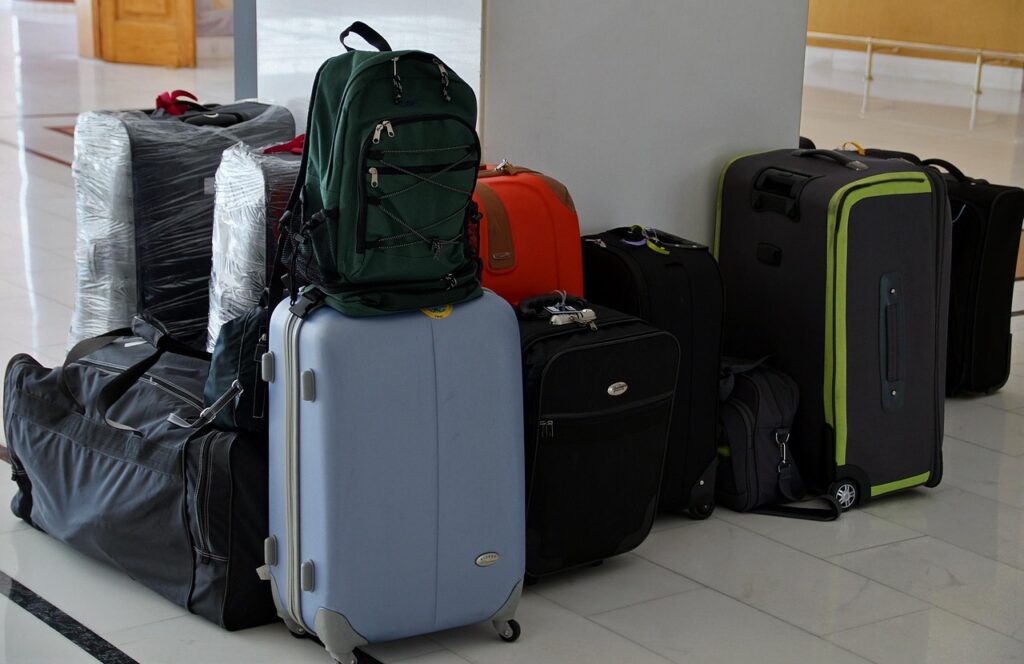
The last step before closing your bag should be a methodical evaluation to eliminate unnecessary weight. Once packed, remove everything and physically handle each item while asking three critical questions: “Will I definitely use this?”, “What’s the worst that happens if I don’t bring it?”, and “Can I get this at my destination if needed?” Weigh your packed bag on a scale and compare it to comfortable carrying recommendations—for most people, a bag shouldn’t exceed 10-15% of body weight for comfortable all-day carrying. Perform a mobility test by walking with your fully packed bag for at least 10 minutes; any significant discomfort indicates potential issues during your actual journey. Finally, consider the return journey—have you left adequate space for any souvenirs or items you might acquire during your adventure? This final evaluation often identifies several items that can be left behind without any meaningful impact on your experience.
Mastering the art of packing light for a three-day adventure opens up a world of mobility and freedom. By thoughtfully evaluating each item, embracing versatility, and preparing appropriately for your specific destination and activities, you can create the perfect balance between preparedness and traveling light. Remember that the most valuable elements of any adventure are the experiences and memories you’ll bring home—not the extra shirts or “just in case” items that remained unused in your bag. With practice, efficient packing becomes second nature, allowing you to focus on what truly matters: the adventure itself.

